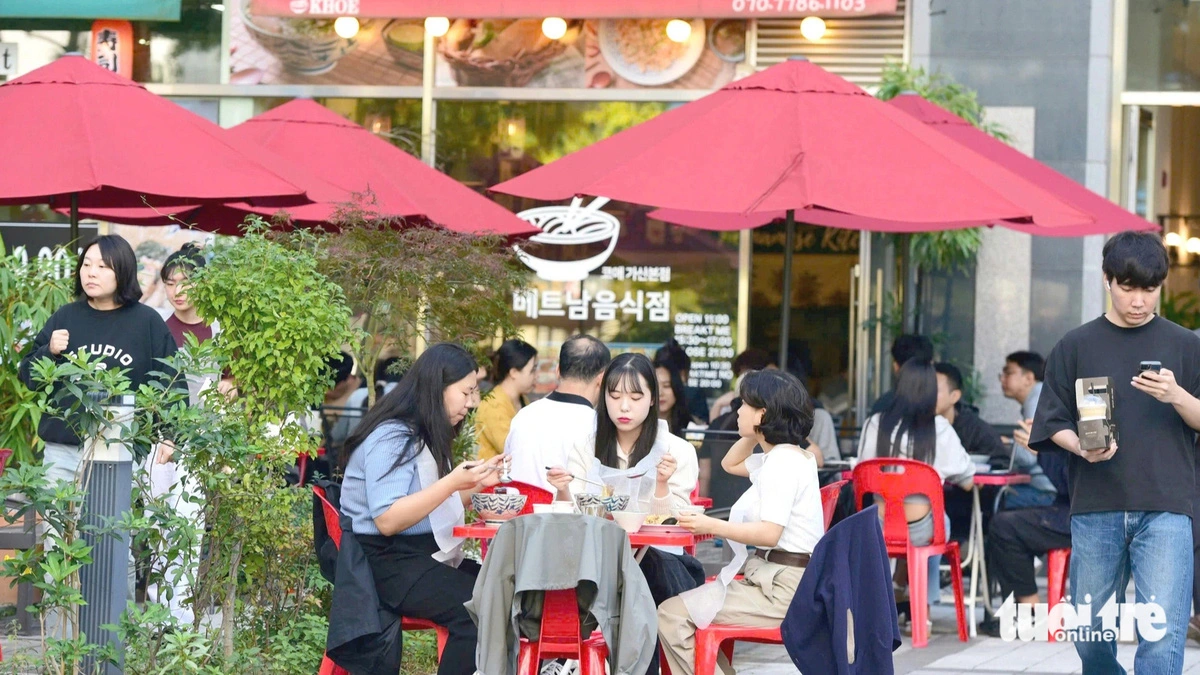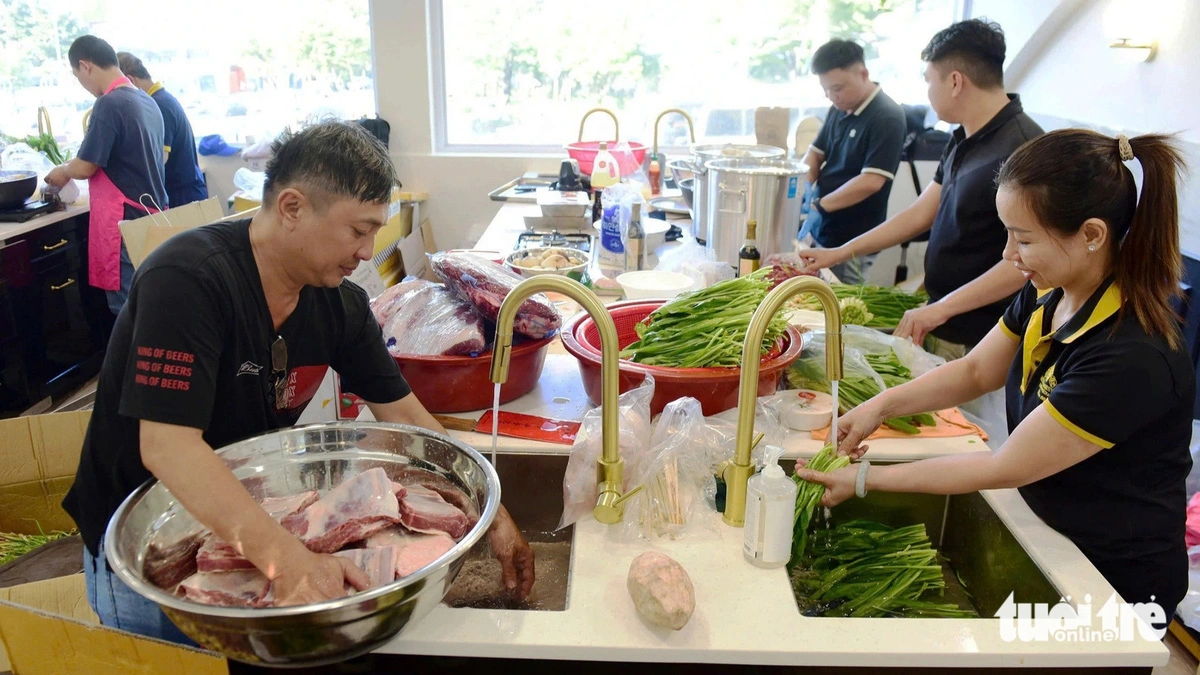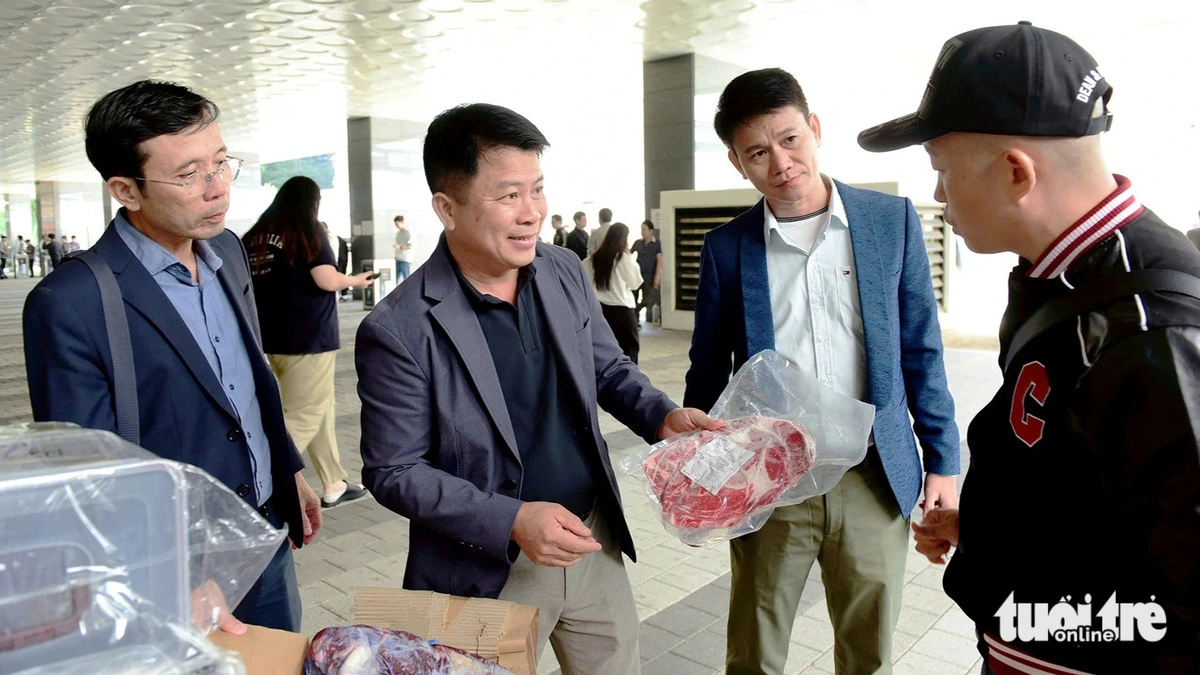
Pho appeared in small corners of the busy Vietnamese neighborhoods in South Korea and has become increasingly popular in office buildings, shopping centers, attracting both locals and international tourists.
1km, one Vietnamese restaurant
Choén restaurant is located on the second floor of a building with two facades in the Hwegi area, Dongdaemun-gu, the capital of Seoul. This restaurant specializes in Vietnamese dishes such as bun bo, bun cha, and crab noodle soup... but pho bo remains the best-selling dish.
Dongdaemun-gu is the second most populated district of Vietnamese people in Seoul, but more than 50% of the customers are Chinese and Korean, with Vietnamese locals and international tourists coming afterward.
Lang Hai Yen, the owner of Choén, considers herself an amateur in the Vietnamese restaurant business. She originally ran a grocery store, but customers would often ask her about Vietnamese dishes.
"I opened the restaurant two years ago. The customers are not only young Koreans who have traveled to Vietnam and learned about Vietnamese cuisine, but also older Koreans.
Interestingly, after eating, they enjoy the taste of Vietnamese food so much that they return or choose it more regularly to change their taste. In South Korea, the review culture is very developed. A good restaurant with positive reviews will attract more customers," Yen shared.
In recent years, pho has gone beyond the boundary of a traditional Vietnamese dish to become a part of the diverse food scene in Seoul, South Korea.
Compared to a few years ago, the area around Choén restaurant now has more Vietnamese restaurants, most of which are owned by Vietnamese, so they maintain the culture and authentic flavors in their dishes. "The success rate of Vietnamese owners is higher, and pho remains the most successful dish, followed by fried rice, bun bo, and bun cha," Yen added.
Speaking of the success of Vietnamese restaurant owners, one must mention the Pho Khỏe restaurant chain. Currently, the chain has six restaurants in South Korea with positive feedback at all locations.
On the afternoon of October 4, at the Khỏe restaurant in the Gasan-dong area, Geumcheon-gu, we saw the "word of mouth" effect when the entire outdoor area and inside the restaurant were filled with customers, mostly locals. Pho was the most popular dish ordered by Koreans here. They ate it with enjoyment and familiarity.
Mr. Nguyễn Đình Tuyên, owner of Pho Khỏe in Seoul, said that the pho here retains its traditional flavor as it is in Vietnam, which is why it is loved by consumers. Running a restaurant and constantly updating flavors and eating styles, the restaurant quickly adapts to the local food trends.
"With food, Koreans always believe that it must be safe to eat, and if it makes them feel healthy, they will return. Vietnamese cuisine is going in that direction, balancing flavor and nutrition," Mr. Tuyên said.
After years of business and standardizing the model, Khỏe restaurant is considering franchising, as Vietnamese cuisine is gaining recognition globally.
The Vietnamese ambassador to South Korea, Vũ Hồ, once shared that he hopes there will be a pho restaurant every 3 kilometers in South Korea, but according to many restaurant owners in Seoul, there is currently a Vietnamese restaurant every 1 kilometer here.

Localizing the unique flavors
One notable point is the development of pho restaurant chains owned by Vietnamese people in South Korea.
Vietnamese pho restaurant owners, bringing with them the flavors of their homeland, have built famous brands and made a fortune by sharing their culinary culture with the locals. The pho restaurants are always bustling with customers, especially on weekends, and the pho that retains the most authentic taste of home is the most popular.
Mr. Kwon Joo - sung, 27 years old, shared that he came to Vietnamese cuisine through an invitation from a university friend and now pho, banh mi, and bun cha have become his favorite dishes, the first choice whenever eating out with friends.
"Pho restaurants, which were once considered gathering spots for young Koreans interested in exploring foreign cuisines, have now slowly infiltrated into the daily lives of Korean people," he commented.
Mr. Tuấn Quỳnh, a tour guide in South Korea, said that a few years ago, Chinese restaurants dominated, but recently Vietnamese restaurants are on the rise, associated with the positive trade relations between Vietnam and South Korea.
"But when you look deeper, you will understand that Vietnamese dishes are well-received because the flavors are kept intact, without being modified like decades ago. Vietnamese restaurant owners have confidently preserved characteristics such as star anise and cinnamon in pho to succeed in attracting customers," Mr. Quỳnh said.
Ambassador Vũ Hồ stated that almost all Koreans know pho, and it is clear that they really enjoy Vietnamese dishes, especially pho. Pho and pho restaurants with very Vietnamese names regularly appear in Korean dramas.
The development of pho restaurants in South Korea is not just a business activity but also a cultural bridge helping the people of both countries understand each other better.
"With the 330,000-strong Vietnamese community in South Korea, including around 80,000 international students and 80,000 Vietnamese brides... pho is being popularized in the lives of the Korean people by these 'ambassadors' of the Vietnamese diaspora."
"Koreans are no longer unfamiliar with pho, but to have the opportunity to taste various types of pho from famous, long-established Vietnamese brands, one can only find it at the Vietnam Pho Festival. Vietnamese pho has long crossed borders to reach South Korea, a country whose traditional cuisine has its own unique characteristics," the ambassador shared.

Why Choose NoodleSaigon20 Pho and Vermicelli?
At NoodleSaigon20, we believe that selecting the right rice is crucial to crafting authentic and delicious pho and vermicelli. We use carefully chosen rice varieties to produce high-quality noodles, ensuring an exceptional culinary experience for our customers.
01Traditional flavor, exceptional quality02International HACCP-certified factory
03Advanced freezing technology for preservation
04Convenient and easier to prepare compared to dried noodles
05Favored by international diners, exported to countries like Korea, Japan, etc.
|
Currently, the product is available for wholesale/retail in South Korea. You can place orders via Hotline, message on the Fanpage, or order directly on Coupang: |


